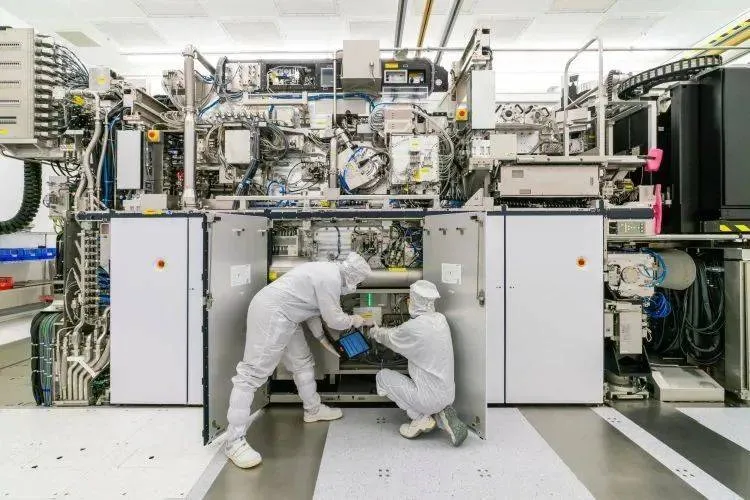What Liang Shuming said to Mao Zedong during the six long talks in Yan'an
This year marks the 130th anniversary of Liang Shuming’s birth. On January 1, 1938, Liang Shuming arrived in Xi'an to inspect defense as a member of the National Defense Council. On January 7, arrived in Yan'an. Liang Shuming's visit to Mao Zedong in Yan'an can be said to be a major event in the history of modern Chinese thought and even politics.
Liang Shuming and Mao Zedong were old acquaintances. Liang Shuming's real name was Liang Huanding. His brother Liang Huankui and Mao Zedong's teacher and father-in-law Yang Changji were close friends. Yang Changji and Liang Shuming were colleagues at Peking University. During 1918, Liang Shuming met this tall young man from Hunan many times at Yang Changji's home.
Twenty years later, Mao Zedong was already the leader of the Communist Party of China, but he regarded Liang Shuming as an old friend who had not been with him for many years. Liang Shuming lamented that Mao Zedong was unconventional, unpretentious, calm, natural and friendly. "Although we argue with each other, we don't feel uncomfortable in our hearts. Generally speaking, you can go back very comfortably every time." It can be seen that when old friends meet, they stimulate each other in theory and will, and both parties are in high spirits and harmonious.
During this meeting, Liang Shuming and Mao Zedong had a total of six long talks. Mao Zedong was accustomed to resting during the day and working at night, so his conversations were all arranged in the evening. The first conversation started at six o'clock in the evening and ended in the early morning of the next day. The topic of the conversation was the future of the Anti-Japanese War.
Liang Shuming believed that China would definitely defeat Japan in the long run, but in the short term, China's future was deeply pessimistic. The reasons for the pessimism are: first, the corruption and incompetence of the Kuomintang bureaucracy; second, the Kuomintang army's steady retreat in the face of aggression; and third, the Kuomintang's inability to provide a path to lead China to victory in the War of Resistance.
Mao Zedong said categorically: "There is no need to be pessimistic about China's future. It should be very optimistic! In the end, China will win and Japan will lose. This can only be the outcome, and there is no other possibility!" After that, he carefully analyzed the enemy, ourselves, and friends. The balance of power, the nature of the war, the transformation of strength and weakness, and the stages of war development, step by step to discuss that China must win and Japan must lose.
At the beginning of the all-out war of resistance, the whole country was confused about the direction of the war, but Mao Zedong, who lived in the northwest, actually gave a persuasive prediction that later proved to be completely correct. This not only gave Liang Shuming confidence, but also made him truly begin to know and understand the Communist Party, and began to realize that the path followed by the Communist Party and Mao Zedong was the future of China.
Liang Shuming believes that class differentiation or class opposition in traditional Chinese society is not obvious. Traditional society is not a class society, but an ethics-based society. What distinguishes people is not class, but occupation, that is, social division of labor. Most of traditional China was rural, and most people were farmers. The main social form in traditional China was clan-dominated, and rural elites exercised autonomy through ethics and local customs. "This is a small cohesive community filled with warmth rather than full of class struggle." The essence of China's defeat and crisis in modern times is the disintegration of this society, and future social construction should be about rebuilding this form of society.
Mao Zedong put forward tit-for-tat views. He believes that traditional Chinese society is a society with severe class divisions, and the most prominent and fundamental conflict is the opposition between landlords and farmers. Land annexation, conflicts between owners and tenants, and polarization are the root causes of the cycle of political chaos in traditional China and why modern China lags behind the West. The fundamental problems in traditional China were the land issue and the class issue. Building a new China must start by solving the class issue.
The differences between Liang Shuming and Mao Zedong were due to different ideas of national salvation and different theoretical paradigms. However, under the superficial opposition, there were some profound consensuses.
For example, Liang Shuming opposed appropriationism throughout his life and insisted on using the theory of China’s “native products” to explain China. Mao Zedong also opposed dogmatism and proposed living Marxism rather than rigidly following dogmatic Marxism regardless of the facts of each country.
For another example, both the theory of rural social harmony and the theory of class conflict understand the country from the perspective of social reality, emphasizing that social construction is the prerequisite for the construction of an upper-level country. The construction of New China needs to be based on the construction and transformation of the social level. Written in the Yan'an period, "In Memory of Bethune", "Serving the People" and "The Foolish Old Man Moves the Mountains" propose a Chinese-style strong and simple morality that pursues sacrifice of the individual and dedication to the greater self, which forms the basis of social existence. , is the sublation and sublimation of traditional morality and culture.
Question 3: The future of socialism in China——
Regarding the question of what Chinese society is and how to build a new Chinese society, Liang Shuming and Mao Zedong had two whole-night exchanges, which enhanced their understanding of this issue. Many years later, Liang Shuming recalled that controversy. What he would never forget was "Mao Zedong's politician's style and bearing." Wearing a leather robe, he sometimes walked around, sometimes sat down, and sometimes lay down on the bed, very relaxed and unhurried. He doesn't get angry, doesn't argue, speaks humorously, and often has unexpected witty remarks. It's obviously an argument where neither side gives in, but it makes you feel comfortable, like talking with old friends. "It was already daybreak when he sent me out. I still remember his last words: Mr. Liang is a thoughtful person. We don't need to draw a conclusion to our debate today. Let's save it for the next time."
In addition to meeting Mao Zedong, Liang Shuming also visited the government, party headquarters, agencies, and schools of the Shaanxi-Gansu-Ningxia Border Region, and inspected the land reform, democratic election system, students, and women's organizations in the border region. He has three impressions of Yan'an's scenery:
First, the harsh natural conditions. “It was a severe winter, extremely cold and unbearable, and as far as the eye could see, it was desolate and miserable, the population was sparse, and the local poverty was evident at a glance.”
The second is liveliness. “Although they are in an extremely difficult and embarrassing environment, everyone is very high-spirited and lively. No one looks miserable. Everyone likes to learn and research, and they are high-spirited and busy. , motivating each other in labor and study." Everyone has an uplifting spirit that Liang Shuming admired.
The third is unity. "Various public groups, including farmers' associations and chambers of commerce, etc., have transformed from class-based organizations into national organizations and are open to all people to achieve the greatest possible unity."
For Liang Shuming, these three questions were the starting point for gradually establishing a new understanding of China in the second half of his life through questioning; for Mao Zedong, they also helped him to further understand the problems of Chinese society and further promote the sinicization of Marxism. .





